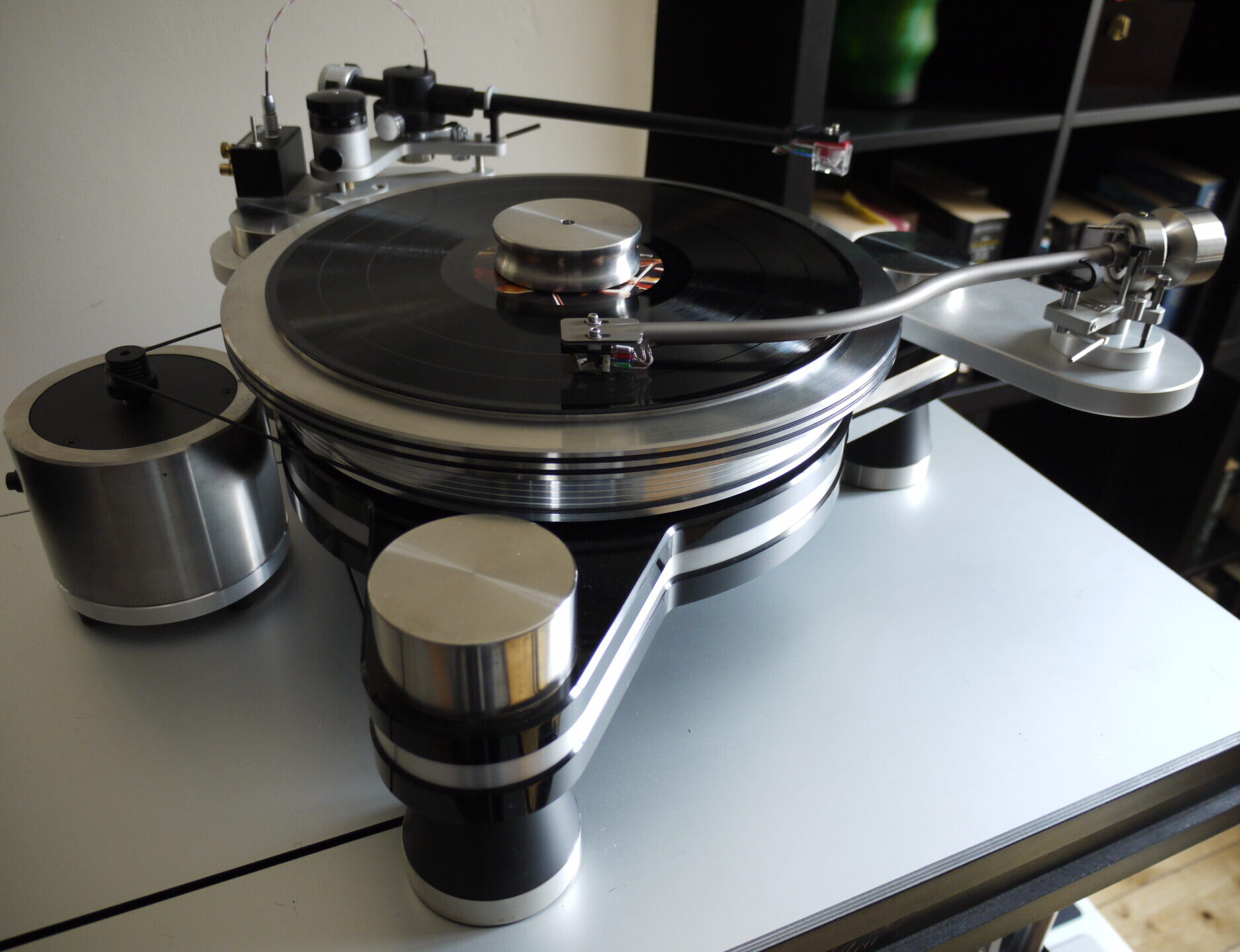That was all a long time ago and the rise of the CD medium and shrinkage in the vinyl replay market saw Alphason move on (even more successfully) to the production of dedicated hi-fi furniture, where again the company broke new ground. Ultimately, designer Mike Knowles sold up and re-focussed his design skills on sustainable engineering and green energy, but now both he and the Alphason tonearm are back – the latter better than ever.
Although I had plenty of experience with the HR-100S, I think it’s entirely likely that I never realised just how good it could be. The majority of my listening revolved around the LP12 – and Linns in general, particularly Linns of that vintage, didn’t necessarily play to the Alphason’s strengths. The arrival of the HR-200S has proved a sobering experience indeed. If the original Alphason was good, the updated version is considerably better still. But that’s only the beginning of the story where the new tonearm is concerned…
 When everything had to be mounted (or at least, mountable) on the LP12, 9” arms were de rigeur. Nowadays, such short tonearms seem almost dimensionally deprived, so alongside the 9” original, the HR-200S is also available in 10.5” and 12” versions – and being that this is very much an engineering project, conducted by an engineer, they come with a range of counterweights and bias-weights to match. Look closely at the cartridge platform and you’ll see a black line around its edge, visible evidence of a composite insert that both stiffens and damps the structure. There’s still no finger lift, although a small plastic stub that can be added to the right-hand cartridge-mounting bolt is included. It might not be as bad as the zingy spring piece offered by SME, but like all such devices, it’s best discarded. The large cartridge-mounting platform means that, in any case, a thumb pressed against the front corner works just as well. The bearings contained in the elegant gimbal housing are still zero-play ceramic, but a new “Super Finishing” process has allowed far higher pre-loads to be applied, resulting in significantly increased rigidity while maintaining optimum friction values. Even the falling-weight bias arrangement has been refined and updated, eliminating the roller (to prevent rattles) and using silicone collars to locate the thread on the bias bar, allowing for infinite adjustment. Two spare silicone collars are included, just in case you drop one (or two) when installing the bias weight. The counterweights lock onto a damped, threaded sleeve, so that once you have set an approximate tracking force, really fine adjustment is a cinch.
When everything had to be mounted (or at least, mountable) on the LP12, 9” arms were de rigeur. Nowadays, such short tonearms seem almost dimensionally deprived, so alongside the 9” original, the HR-200S is also available in 10.5” and 12” versions – and being that this is very much an engineering project, conducted by an engineer, they come with a range of counterweights and bias-weights to match. Look closely at the cartridge platform and you’ll see a black line around its edge, visible evidence of a composite insert that both stiffens and damps the structure. There’s still no finger lift, although a small plastic stub that can be added to the right-hand cartridge-mounting bolt is included. It might not be as bad as the zingy spring piece offered by SME, but like all such devices, it’s best discarded. The large cartridge-mounting platform means that, in any case, a thumb pressed against the front corner works just as well. The bearings contained in the elegant gimbal housing are still zero-play ceramic, but a new “Super Finishing” process has allowed far higher pre-loads to be applied, resulting in significantly increased rigidity while maintaining optimum friction values. Even the falling-weight bias arrangement has been refined and updated, eliminating the roller (to prevent rattles) and using silicone collars to locate the thread on the bias bar, allowing for infinite adjustment. Two spare silicone collars are included, just in case you drop one (or two) when installing the bias weight. The counterweights lock onto a damped, threaded sleeve, so that once you have set an approximate tracking force, really fine adjustment is a cinch.
VTA is still set with a post and collar mount, but these days, a vertical threaded post with a TORX head and Delrin tip allows you to set arm height with considerable precision. It’s the same system used by Thales on their Statement arm and it works just as well. Loosen the mounting collar and the arm slips up and down so smoothly that it is entirely possible to adjust VTA on the fly, as long as the arm is mounted on a stable ‘table. Certainly, neither the VPI Avenger nor the Grand Prix Audio Monaco v2.0 presented any problems in this regard.

